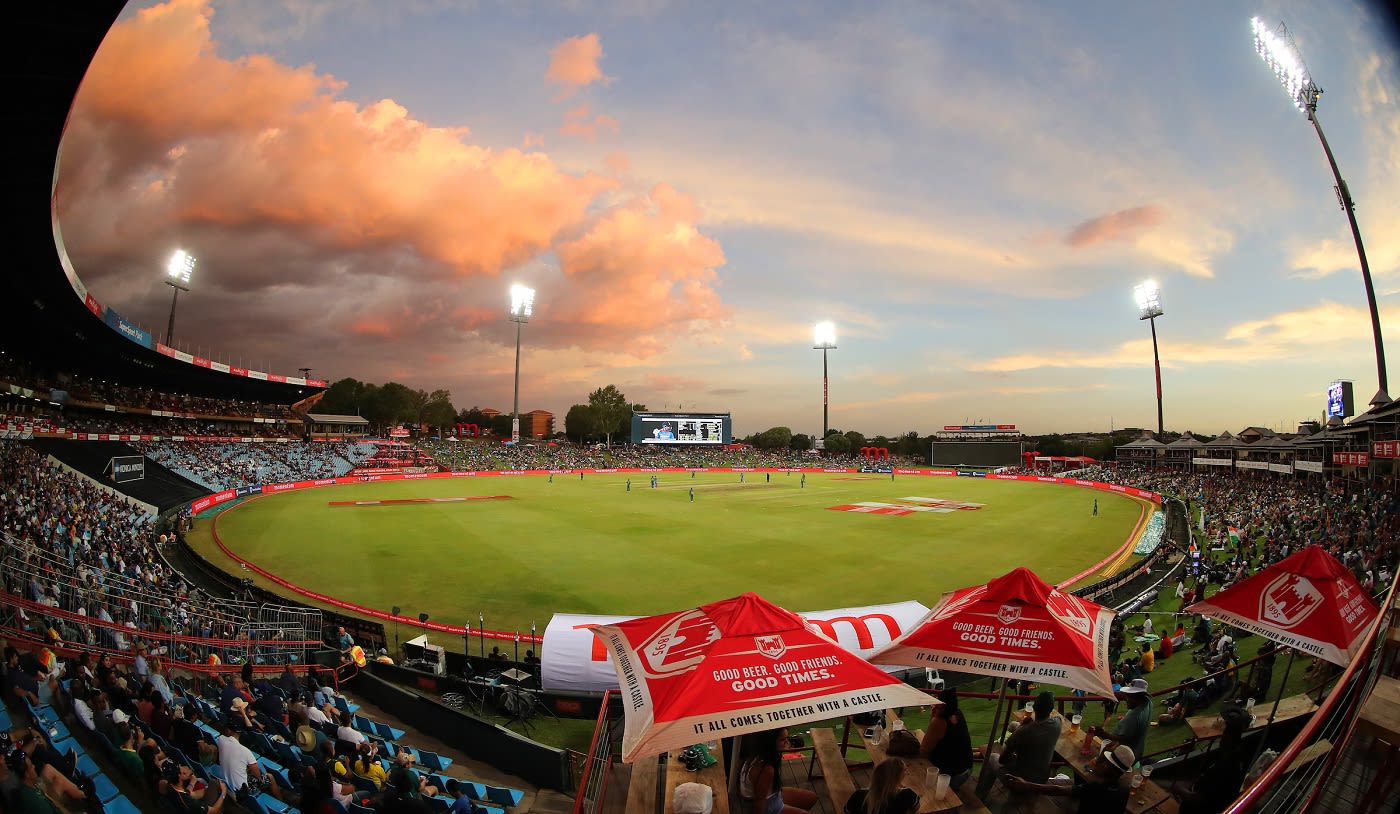South Africa’s six venues for the SA20 will be required to ensure they have an electricity supply independent of the national power utility to keep the lights on for the duration of the tournament.
South Africa experienced its worst power cuts in 2022, with more than 200 days affected by interruptions to the electricity supply. It is expected to get worse in 2023.
As things currently stand, the country is on Stage 2 (of eight) of its rotational power cuts, which leaves areas without electricity for two-and-a-half hours a day. At its worst, as recently as December 2022, Stage 6 blackouts were in force, with electricity cuts of up to 11 hours a day in some areas. While Cricket South Africa (CSA) were forced to change some domestic day-night matches to day games, the SA20, whose six teams are all owned by IPL frachise owners, is being televised around the world and its start times (1.30pm and 5.30pm local time) cannot be moved. To accommodate for any potential interruptions, the stadiums for the SA20 are required to rent generators to keep the floodlights, changing room lights, and lights in the stands and around the ground, including the bathrooms, on.
The cost of renting generators for the five home games that each team will play can be as much as R2 million per stadium (US$ 117,000 approx.) and will come out of their hosting fees. Each stadium will be paid R850,000 (US$ 50,000 approx.) in hosting fees per match, plus an additional R220,000 (US$ 13,000 approx.) for other costs. For most grounds, this amount covers their logistical expenses, including electricity.
The Wanderers in Johannesburg, because of its size, is an exception. While the ground has built-in generators and will only spend money on fuel, it costs them more than R1 million (US$ 58,000 approx.) to host a T20 match. The shortfall will be paid by the SA20 itself and ESPNcricinfo understands the stadium will only just break even over the course of the tournament. Smaller stadiums, such as Paarl’s Boland Park, will fare better as their operating costs are lower. The other four stadiums – SuperSport Park, Kingsmead, Newlands and St George’s Park – fall within the range between Johannesburg and Paarl, and are all expected to make a profit, even if small, from hosting the SA20.
The financial benefit for the stadiums is different to what CSA, who are shareholders in the SA20, can expect to make overall. Despite initially predicting it would take five years for the league to turn a profit, the sale of broadcast rights around the world and acquisition of major sponsorships means that the SA20 will make money from its first year. What is not known is whether the shareholders will choose to distribute the money immediately as it is made, or wait for another few cycles. CSA may not initially have any windfall from the tournament and insiders are predicting another difficult financial year for South African cricket.
In November, CSA reported a loss of R198 million (US$ 11.65 million approx.) despite hosting India last summer. The tour did not include four scheduled T20Is, which severely impacted CSA’s coffers. This summer is expected to be much leaner, with only ODIs against England, a full tour by West Indies, and ODIs against Netherlands on the schedule. The South Africa men’s team and all three of the domestic competitions remain unsponsored.
